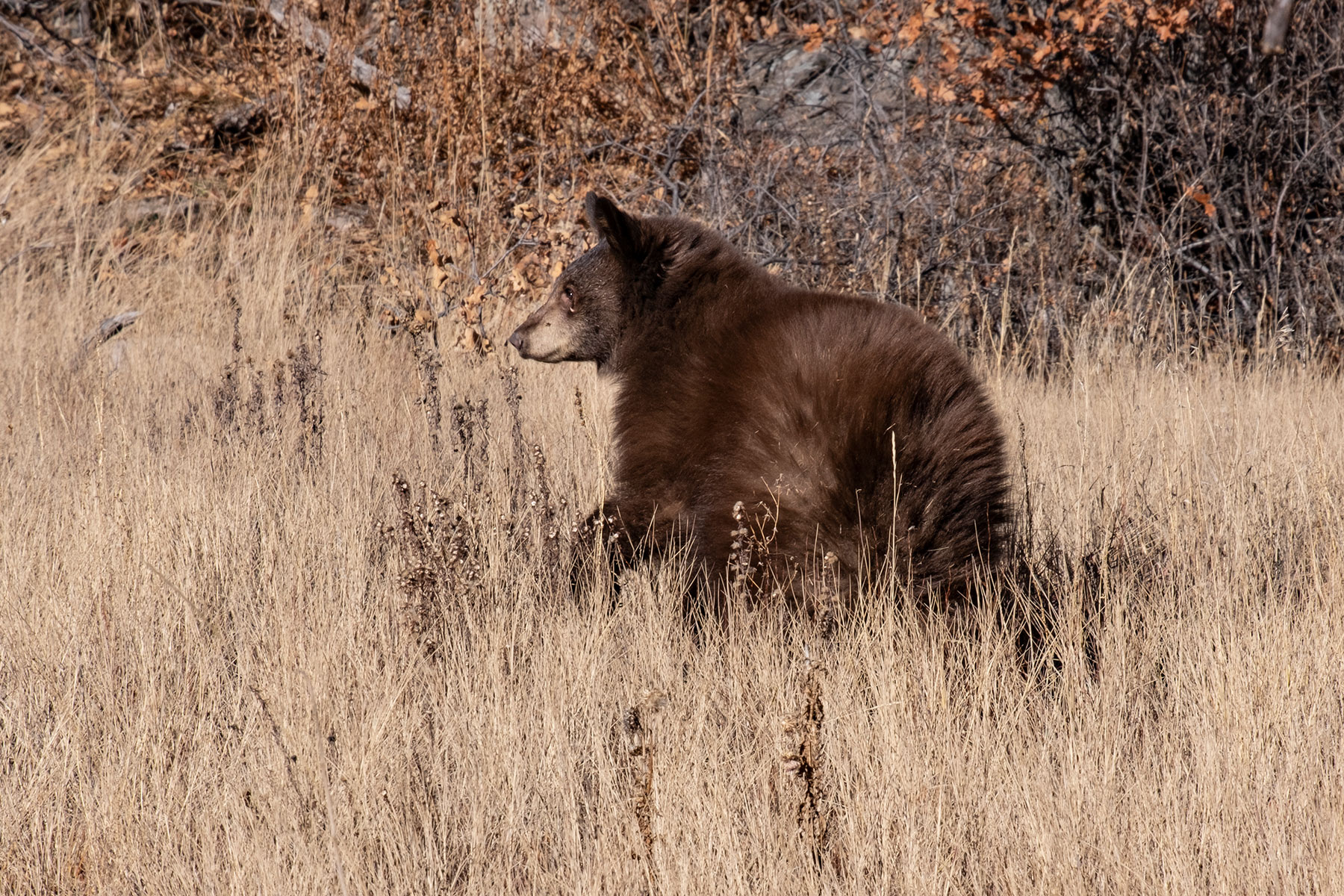Tribe releases bear cubs into the wilderness



Earlier this month, interagency collaboration between CPW and the Southern Ute Wildlife Resource Management Division saw two bear cubs released back to Southern Ute land after a stay at the Frisco Creek Wildlife Rehabilitation Center, according to a press release from Colorado Parks and Wildlife — Southwest Region. “The cubs stayed at the Frisco Creek Wildlife Rehabilitation Center, where they had minimal human interaction while they grew bigger and stronger until they were ready to be released back into the wild on Friday, Dec. 3.”
The cubs were then returned to Aran Johnson and Danielle Austin with the Southern Ute Wildlife Resource Management Division for reintroduction into the wilderness within Southern Ute lands.
“Because the bear is such an important wildlife species to the Utes, it was also important for us to work with spiritual leaders of the Tribe, to ensure the animals were handled in a good way and blessed on their journey ahead,” emphasized Southern Ute Wildlife Division Head Steve Whiteman. “That cultural aspect of our relationship with wildlife is very important to the Wildlife Division.”
“We do that with other wildlife in certain situations,” Whiteman added. “We want to do this in a culturally appropriate, culturally sensitive way — as these animals are sent off for survival in the wild.”
Bear Dance Chief Matthew Box provided a blessing over the cubs before they were returned to tribal lands, for a release in a remote section of the HD Mountains. “Ute people believe the kwiyaghatʉ (bear in Ute) are relatives, and the annual Bear Dance was gifted to them from the bear. Ute traditional teachings strictly forbid harming a bear,” said Lindsay J. Box, Tribal Council Communication Specialist.
According to a press release from Colorado Parks and Wildlife — Southwest Region, it started in late July when a tribal homeowner called the Southern Ute Wildlife division to report an orphaned bear cub that had been hanging out around their home. Another orphaned cub was also in the surrounding area. Aran Johnson, a biologist with the Southern Ute Division of Wildlife, set out to trap the first of the two bears so they could be sent to CPW’s Frisco Creek Wildlife Rehabilitation Center near Del Norte.
“These young cubs, when they were captured, we determined that they were too young to survive on their own, and in order to not habituate them to human food sources, it was necessary to send them to the rehab facility where they could grow older and be fed in a manner where they don’t associate with human food sources or see people,” Whiteman said. “I think their chance of survival this winter is quite good, and that wouldn’t have been the case had we not intervened.”
After months at Frisco Creek under the care of CPW’s Michael Sirochman, the two cubs were successfully released by Southern Ute Wildlife Biologists, Danielle Austin and Aran Johnson. Once set free — the bear cubs wasted no time in setting off into the wooded areas in the HD mountains in a remote section of the Southern Ute Reservation.
One technique used by the rehab program is to fatten up the bear cubs ahead of their wintertime release date, then by depriving them of their food sources days ahead of their release, the bears instinctually shift their minds and bodies toward hibernation. Biology kicks in and bears — in most instances — will immediately seek a sheltered location in the wilderness to winter until next spring; sheltering themselves in downed timber or a rocky outcrop where they feel safe and protected.
“From a big picture standpoint,” Whiteman explained. “We as the Tribe, have a great relationship with Colorado Parks and Wildlife, where when we recover orphaned or injured wildlife from tribal lands, we can work with CPW’s rehab facility in Del Norte to ensure those animals can survive, and recover from their injuries — if they are injured.”
“Our perspective is that this is their home, and we need to bring them back to their home. It’s not limited to just the bears, [we’ve rescued] mountain lion kittens, also injured hawks and eagles have been rehabilitated and returned to tribal lands here,” Whiteman said. “I see this as a strong relationship with CPW to help keep our wildlife populations healthy.”
Reflecting on a successful release, Southern Ute Wildlife Biologist, Aran Johnson felt fortunate that these bears could be effectively rehabilitated and returned to their natural habitat — which he described as a best-case scenario for both the bears and the Tribe.
“For me I think this is one of those rare positives in human-wildlife conflict,” Johnson said. “We often deal with the negative; homeowner complaints, animal-vehicle collisions [where wildlife doesn’t always survive], it’s a rare thing when we get to rehab an animal, bring it back, and have high hopes for its survival — it’s a highlight.”
“It’s an extra special thing with a bear, being able to work closely with Matthew Box and send those bears off with the blessing of the Bear Dance Chief,” he added.
“We love a happy ending and interagency collaboration to benefit our wildlife!” stated Colorado Parks and Wildlife.



